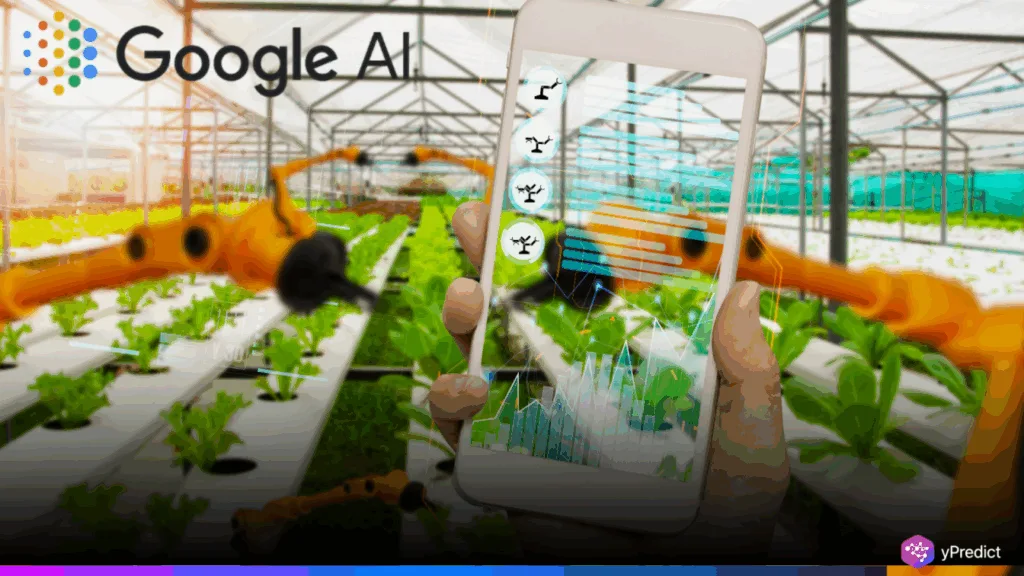
In India, 60 percent of the 1.4 billion people depend on the agricultural sector. Which in turn accounts for more than 18 percent of GDP. Serious socioeconomic implications of climate change, land degradation, and water shortages have been fueled by climate change. To remedy this, Google AI is developing innovations that utilize satellites and accompanying images, more sophisticated analytics, and real-time tracking. Google AI works to provide farmers, governments, and agritech companies with data-driven insights to act on. Projects such as the Agricultural Landscape Understanding (ALU) API and the Agricultural Monitoring and Event Detection (AMED) API.
Google AI’s Agricultural Landscape Understanding and Monitoring Tools Transform Rural Decision-Making
In 2024, Google AI introduces an Agricultural Landscape Understanding (ALU) API. That is developed to project high-resolution satellite imagery and machine learning technology. Which maps the farmlands of India with an incredible level of accuracy. It detects the type of crops, farm irrigation system, vegetation, and the field boundary down to an individual plot. Allows the stakeholders to make a specific, data-based decision. This scale of detail has not been possible until the broader administrative scale. Thus, it has had limited usage at the smallholder farms.
In July 2025, Google AI extended this using the Agricultural Monitoring and Event Detection (AMED) API. AMED provides information about the health of crops in real time. As well as sowing and harvesting dates, along with events such as pest infestations, which are critical. Refreshed twice a week, the tool incorporates crop labeling systems and satellite feeds. So that farmers can quickly react to new problems. Agritech companies are leveraging AMED to maximize the irrigation schedules, forecast their yields, and minimize wastages on their inputs. Not only does Google AI allow us to monitor conditions at a farm level and better plan supply chains. But it also helps to reduce crop losses, as well as facilitate the more accurate assessment of rural credit.
Google AI’s Partnerships and Real-World Applications in India’s Agricultural Ecosystem, but rather are
The agricultural tools developed by Google AI are not mere technical innovations but rather are seen as a part of the entire agricultural ecosystem in India by virtue of the strategic partnerships. Real-world farming tests of these APIs have been conducted at IIT Madras, IIT Kharagpur, and state agriculture departments such as Telangana. Under the AgriStack framework of India, digital agriculture has an ALU and AMED at the bottom of the data infrastructure to access the agricultural data.
Agritech entrepreneurs such as TerraStack utilize Google AI to evaluate farm performance to lend to these farmers in rural settings with a minimized occurrence of defaults. Google AI helps nonprofits like Wadhwani AI tell farmers when their crops will be attacked by pests and how much to farm to maximize profit, reducing pesticide use by up to a quarter in pilots. This is of benefit to more than just the individual farms; aggregated data is used by government programs such as subsidies based on specific issues and climate-resistant insurance plans. With the incorporation of technologies used by companies such as Cropin, which operate on Google Gemini models, agricultural supply chains are now shielded against disruption caused by climate change thanks to predictive analytics.
Google AI’s Role in Building a Resilient and Inclusive Future for Indian Agriculture
The project in Indian agriculture by Google AI is the embodiment of both high technology and proximate relevance. Through accurate mapping, real-time planning, and the coming forecast, Google AI equips farmers, policymakers, and businesses to plan in the uncertainty of weather patterns and unpredictable market failures. These technologies are helping create efficiencies, yield increases, and less strain on our environment. As well as creating financial inclusion by increasing the ability to properly assess credit risk. There are still challenges, such as data privacy and rural digital access, but the direction is there.






